Imperfect Pitch – Excerpts From an ACMP Member’s Anecdotes on a Familiar Obsession
ACMP member Frank van der Drift (Vn/Va, Dordrecht, Netherlands) shared his writings on a decades-long obsession with pitch and intonation. Here is the first installment, excerpted from his piece.
Introduction
Hello, my name is Frank, I have played the violin since my childhood and viola for over half my life . I am addicted to playing classical chamber music but do play some gypsy jazz at the side. One thing to to note is that I am also slow learner. Over the past five decades I have cherished taking lessons on a regular basis, both private and ensemble-wise, always hoping to improve my skills bit by bit, never completely accomplishing the mission of course. Now that I quit my demanding job in health care, I have a lot more time to practice, and read and think about music.
Along the way, it often struck me that one aspect of making music seems to be taken for granted a lot, especially in amateur circles. I am talking of Intonation. For myself it’s always has been the most important challenge to achieve in any music I play.
It struck me that most of my teachers at best told me that I played out of tune when I did, but almost never why. Yet, over the years I collected an arm full of tricks, tips and methods to achieve just that, sometimes by being taught, more often in discussions both with professionals and fellow amateurs, reading, and often by coincidental observations or picking up an a propos remark.
Intangible Tools
My first viola teacher gave me a most valuable tip one time when I could not get past playing a certain tone without it being out of tune. He pointed out that I had intoned the same note a bar or two earlier quite nicely and asked me to think back on that well-tuned predecessor the next time I came to that obviously hard spot for me. It worked. And it still works, whenever I think of it, provided there are no other bears in my way. Imagination can work to a certain extent too. It often helps me when I sing along with my playing in my thoughts.
The most difficult part consists of the really intangible stuff, meaning calm, perseverance, patience and method. Those first three issues are the most important because the only method that I know of simply costs loads of time, like it or not.
Calm, or ‘du calme!’ as a French cellist/chamber music coach during a session stressed to show what intonation was all about. He also demonstrated what he meant quite theatrically. Sat down behind his cello, closed his eyes and with a wide and slow and deliberate gesture placed his finger on somewhere on the A string. ‘Let’s hear if this is a proper D,’ he said, and played the tone. ‘Mwah, bit sharp I figure’. A comparison with the lower D string proved him right. A little slow shift of the hand corrected the pitch. He repeated the procedure a couple of times for demonstration’s sake. It took him about five minutes before he was able to accomplish the right pitches three times in a row. “And now for the next tone,” he declared, smiling.
I had never heard him play a single note out of tune before so I assumed he was just faking it for educational purposes. Later on his girlfriend told me that he had been doing this every single day of his life for the last 15 years. It has obviously paid off.
On another occasion I was sitting on a terrace having tea with a conservatory professor, also a cellist by the way. Through the open window of a nearby room we overheard someone practicing Dvorak’s cello concerto. Over and over the same passage gushed towards us and it was obvious that not one of the attempts was a total success. The teacher slowly shook his head and said, ‘I know this guy. He’s never gonna make it. He’s merely engraving his faults into his system.’ This was a harsh, but possibly very true verdict.
It requires a lot of determination and discipline to change one’s habits and fight the natural inclination to play and play, and enjoy the music, but unless you’re one of those ever so rare naturals who get it all for free, I fear there is no other option.
More Articles

Befriending Performance Anxiety: simple tips for success
Performance anxiety is a universal experience, a survival mechanism that is hard-wired. Many of us react with shaky hands, lack of focus, shallow and fast breathing, rapid heart rate, and even feeling queasy. This is all perfectly natural - our protective sympathetic nervous system comes online to save us from danger, real or imaginary! Join Dr. Xenia Pestova Bennett for a free online webinar about managing performance anxiety on Thursday, October 30th at 6pm UK/Ireland time.Read More ↗
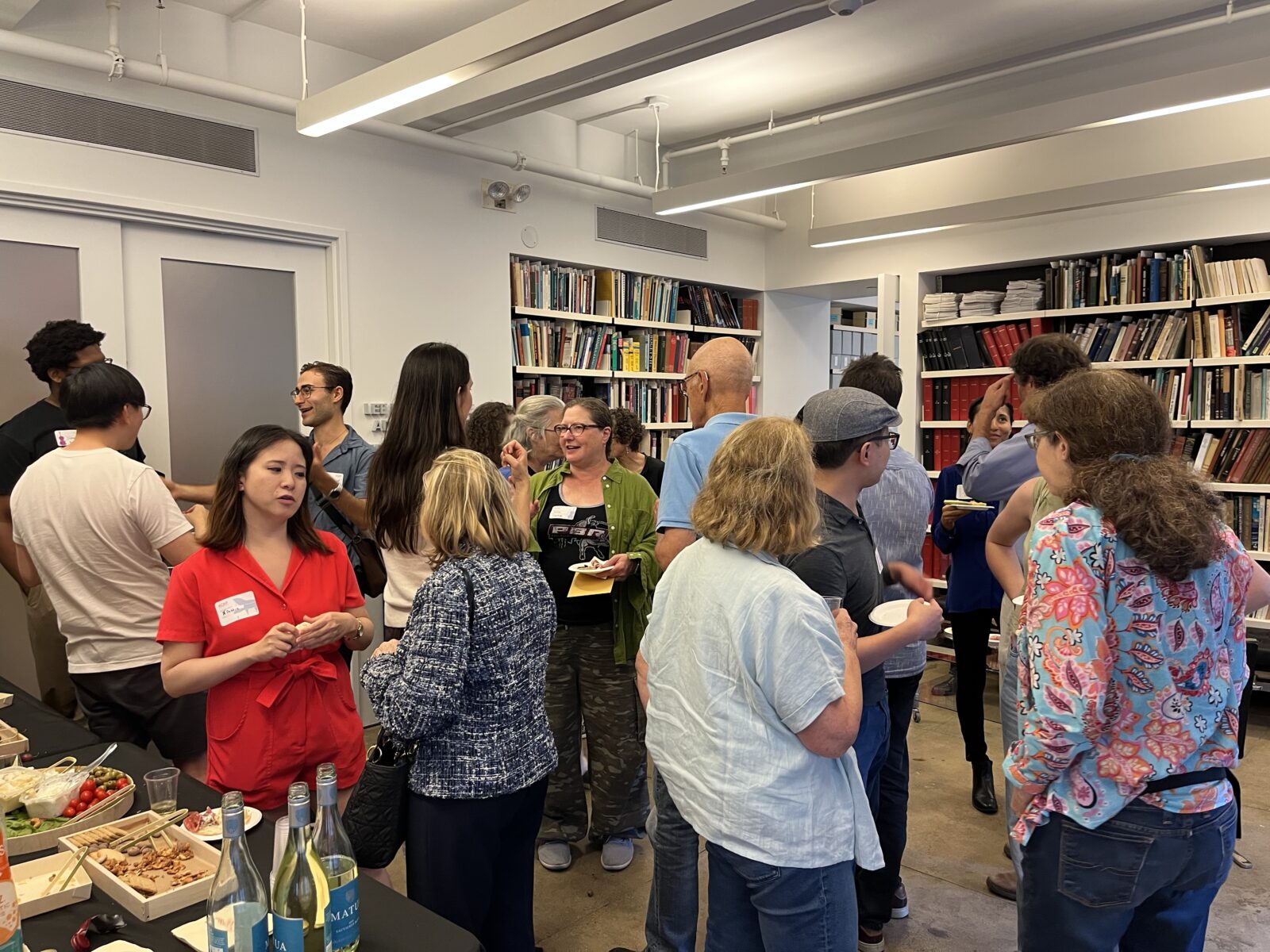
The Great American Play-In: ACMP and ACO
On Saturday, September 13 ACMP embarked on its first collaboration with the American Composers Orchestra (ACO). Together we organized a Play-In focused entirely on music by twentieth and twenty-first century American composers. Over the course of three hours, forty-five musicians discovered sixteen pieces or sets of pieces by a wide range of American composers, spanning from 1896 through 2025.Read More ↗
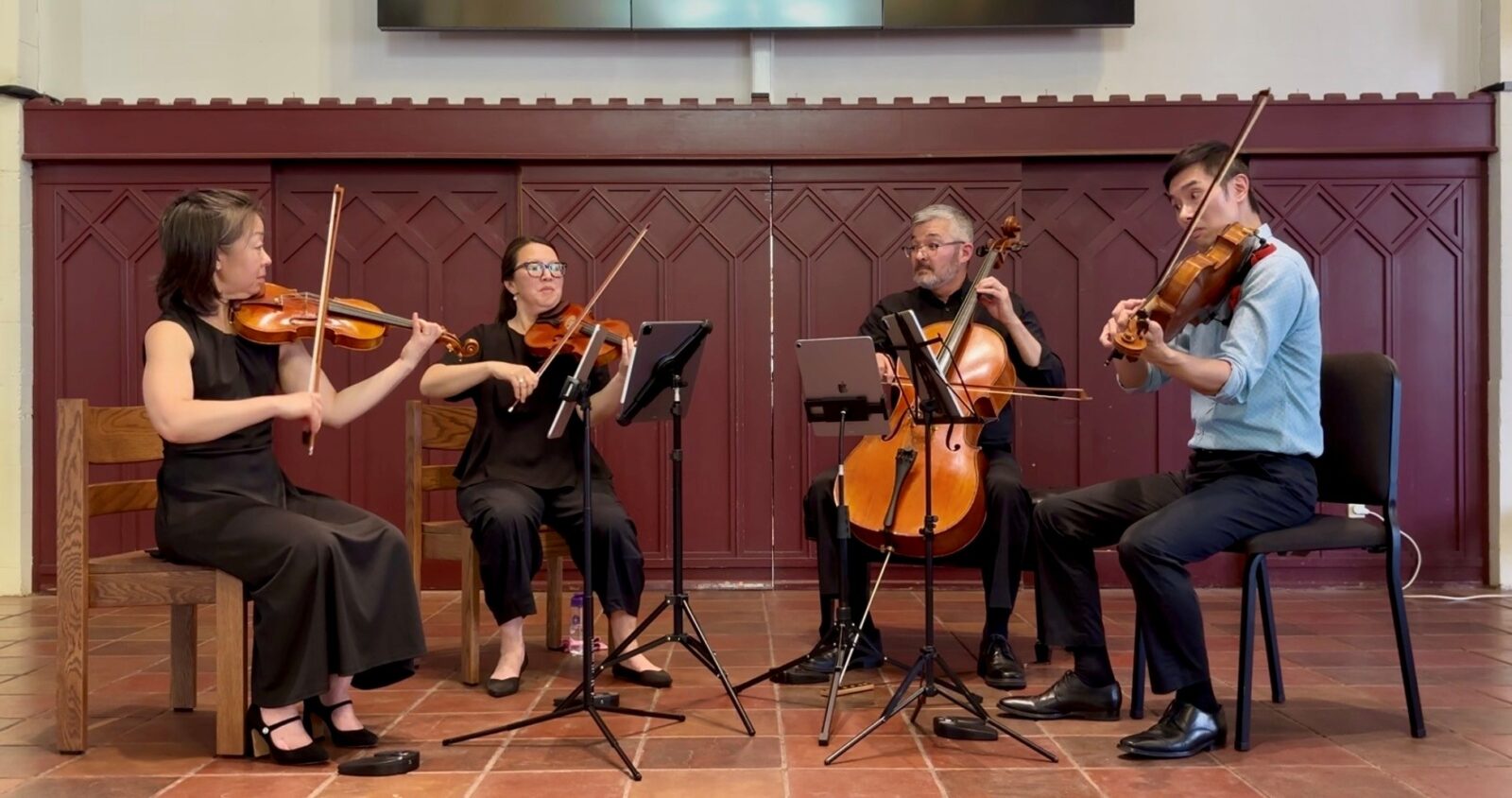
Just Play Concert: Exploring New Voices and Old Masters with the Tarka String Quartet
Thanks to a “Just Play” grant from ACMP, the Tarka String Quartet—Sue Soong and Julie Park on violin, Kevin Jim on viola, and Angus Davol on cello—recently shared a program in San Diego that reflected their passions: exploring new voices by women composers alongside the great works of the quartet tradition.Read More ↗
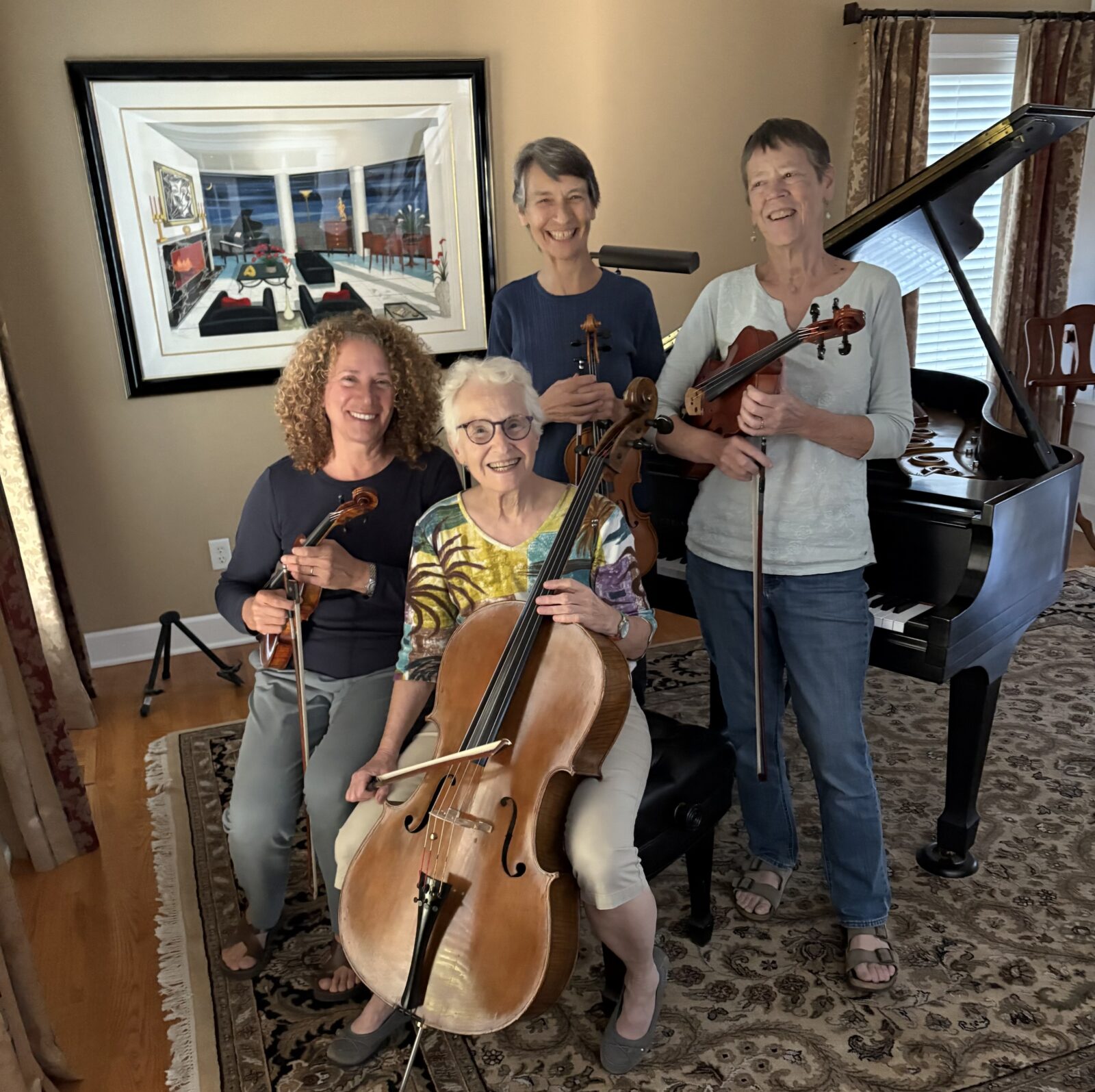
ACMP Members of the Month – October 2025
Playing in a regular string quartet is kind of like having a regular foursome in golf – everyone needs to be of roughly similar ability, and they also need to get along. When those two dynamics come together, the result can be a lasting chamber group that brings enduring friendships. Such is the case with our Members of the Month for October – Ruth Sklarsky, Barbara McIver, Ellen Henry and Kathy Lewis, residents of the Rochester, N.Y., area who have played in a string quartet for more than a decade. They got together and collectively answered a few questions about their musical journey.Read More ↗

ACMP Event: Meet Harumi Rhodes
Join ACMP’s Executive Director Stephanie Griffin on Saturday, November 1 at 2pm Eastern time for a lively discussion and Q and A with violinist Harumi Rhodes. Harumi is the daughter of two famous chamber musicians: Stephanie’s former viola teacher, Samuel Rhodes (Juilliard Quartet) and violinist Hiroko Yajima (Mannes Trio.) Find out more about Harumi’s early life in that celebrated chamber music milieu, and about her journey as she established her own career as the second violinist of the world-renowned Takács Quartet.Read More ↗
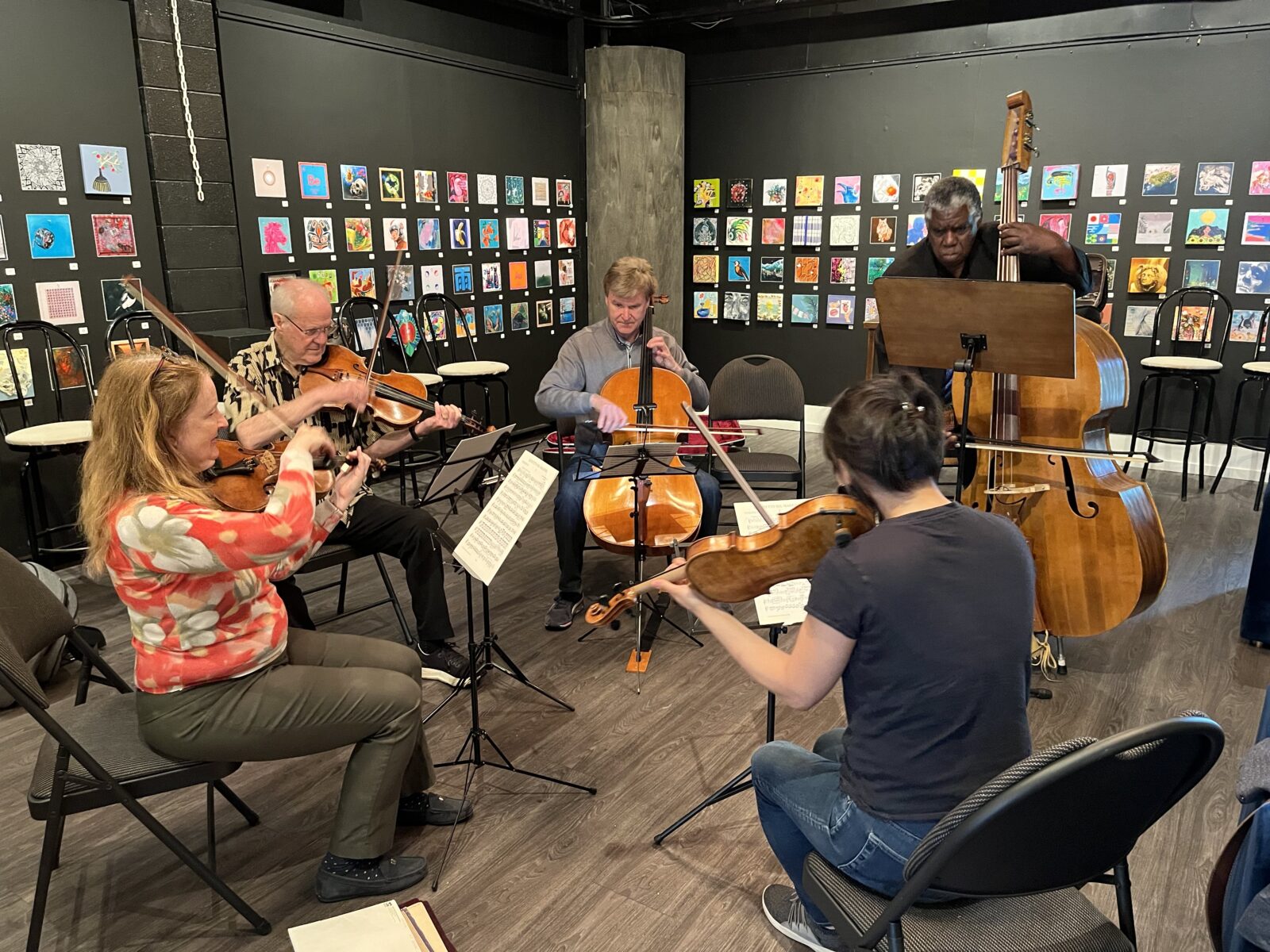
New guidelines for ACMP’s Workshop and Community Music Grant, deadline: October 24, 2025
ACMP's annual Chamber Music Workshop and Community Music grant cycle is open! Deadline: Friday, October 17. Read about the new guidelines and sign up for the Grant Information Session.Read More ↗

A weekend of music and renewal at Chautauqua
When you first set foot on the grounds of the Chautauqua Institution in southwestern New York, it’s easy to understand the lift in Arlene Hajinlian and Sonya Sutton’s voices when they speak about their summer homes, and why they would welcome a group of ACMP members for a weekend of music-making.Read More ↗

Optometrist by vocation, flutist by avocation
For someone who does not pay the rent as a musician, Pat Brown leads a full musical life with her flute. An optometrist by profession and a dedicated flutist, she has been a member of the Texas Medical Center Orchestra for more than 20 years, serving on the board and helping the group win national awards.Read More ↗
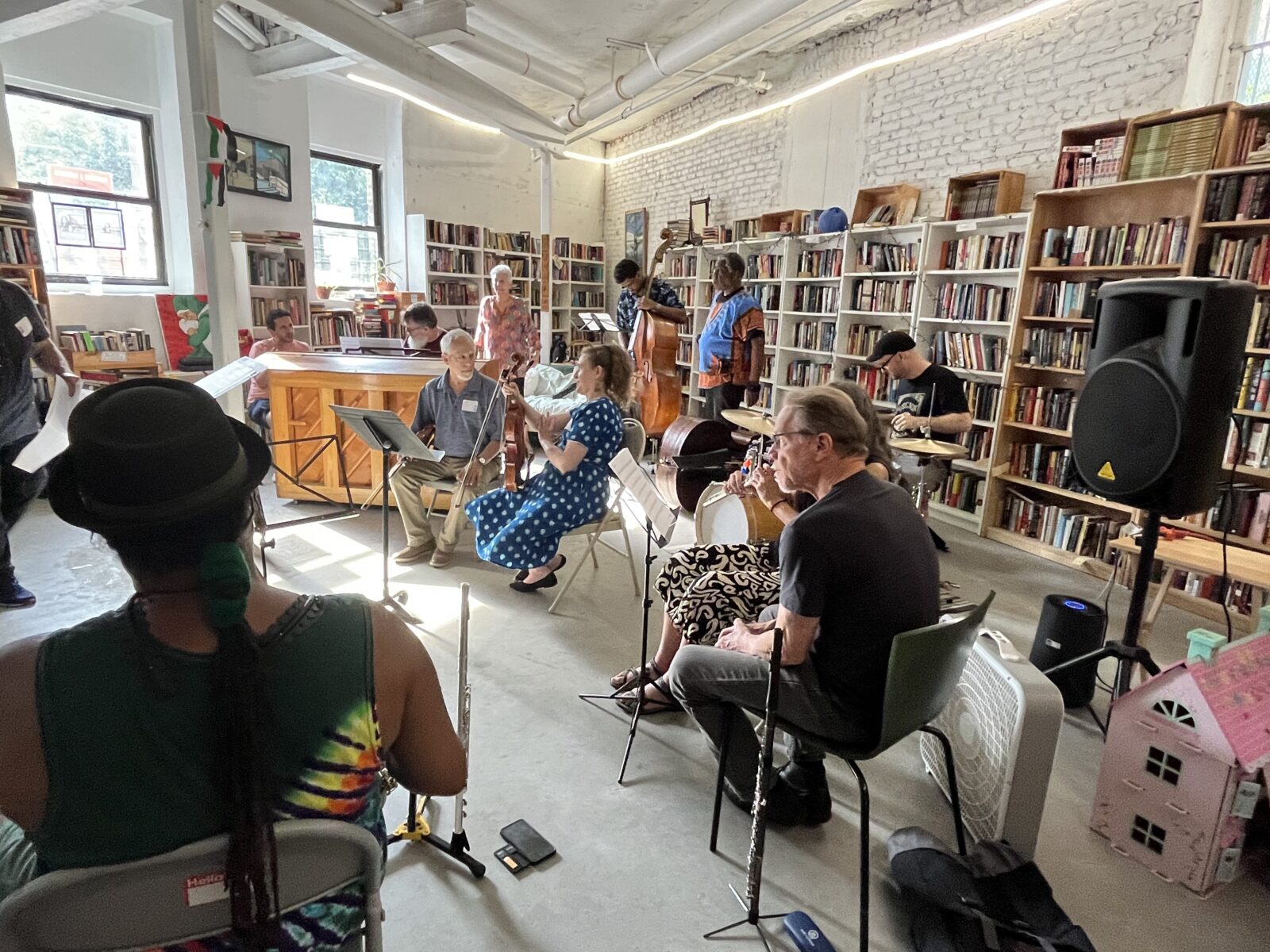
The Great American Play-In: Saturday, September 13 at Opera America
On Saturday, September 13 from 2 to 6pm, the American Composers Orchestra (ACO) and ACMP are hosting a fun and festive chamber music Play-In at Opera America (NYC), focused entirely on chamber music by twentieth-century and living American composers.Read More ↗

A professional pianist charts new musical paths with chamber music
When it comes to chamber music, ACMP pitches a big tent, from players just starting out to those rediscovering a passion for the music they played on their younger days. But ACMP’s membership also includes a thriving community of professionals — highly trained musicians who discover a community in ACMP that is hard to find elsewhere. Grace Shepard is one such professional living in South Florida and serving on ACMP’s North American Outreach Council.Read More ↗

How a cellist learned to love the viola, her way
Chicago-area cellist Ruth Rozen recounts her adventures with a vertical viola, opening the door to playing the inner voices in chamber music.Read More ↗
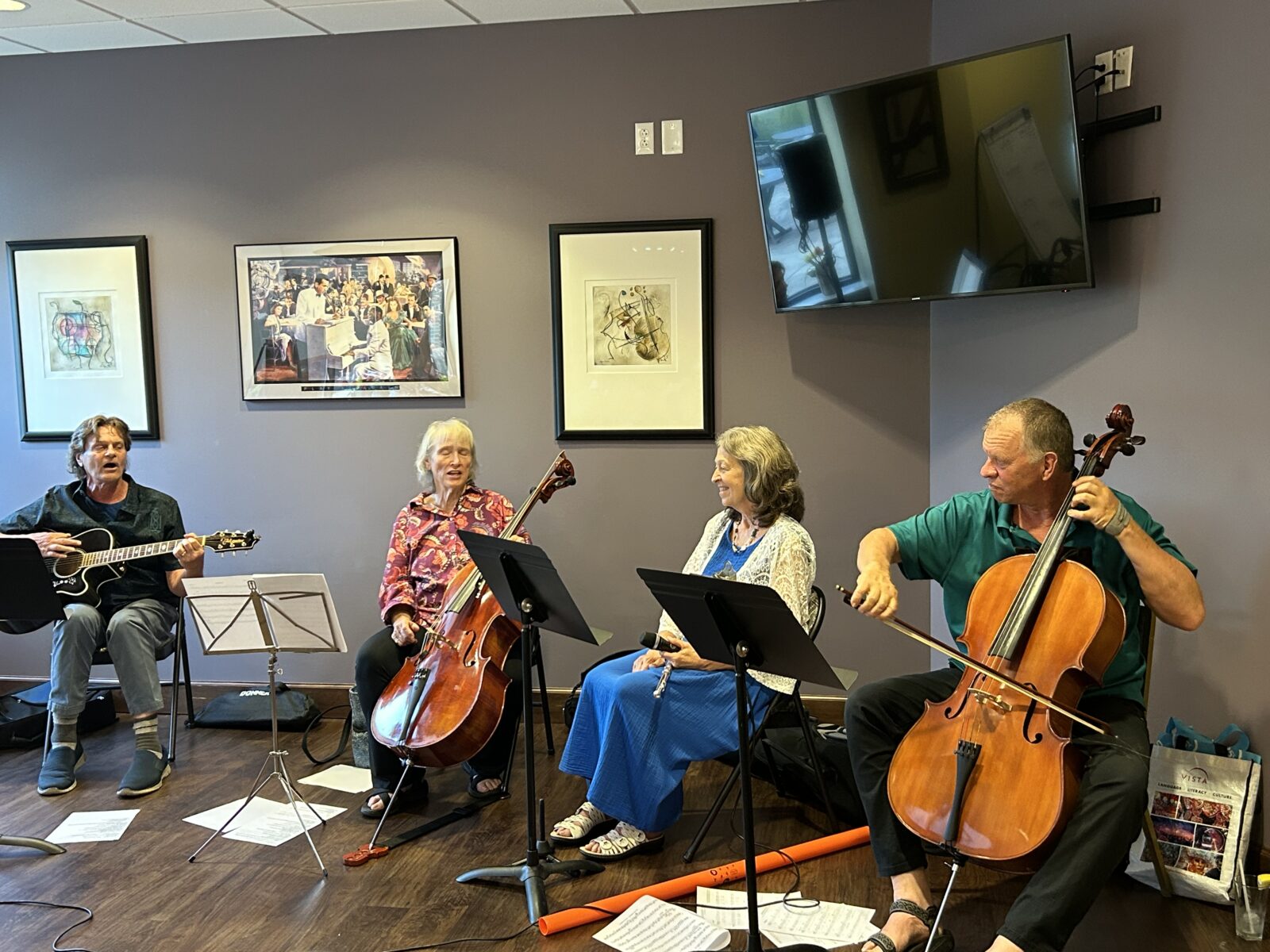
Tremendous Trivia Tunes: A Fundraiser for ACMP
Four members from DeKalb, Illinois tried a new method of fundraising for ACMP. They felt so grateful for ACMP's Home Coaching program and the wonderful teachers in our Coach Directory, that they came up with an innovative idea to give back to our community. They raised a little over $200.00, but the greatest part was how much fun they had doing it.Read More ↗

And the Play-Ins continued in June!
With ACMP's rapidly growing community of chamber musicians, Play-In season is never over! Read about two recent Play-Ins in June.Read More ↗

2025 News of Note Puzzle Contest Winner and Answers
Congratulations to bassoonist Jessi Vandagriff for winning this year's News of Note puzzle contest. And read more for the great puzzle answer reveal!Read More ↗
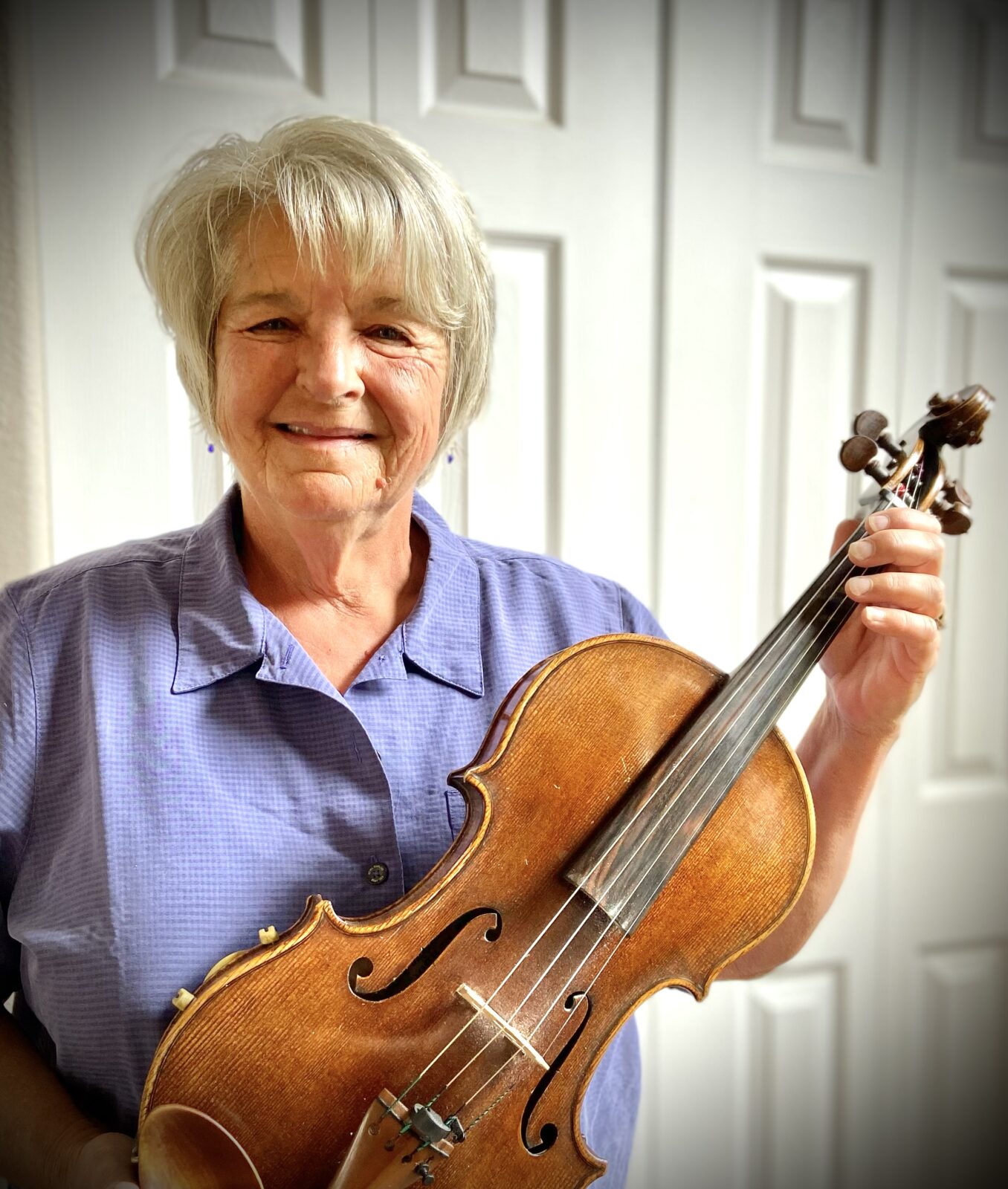
Member of the Month, July 2025: Cheryl Hite
The ranks of ACMP members are filled with professionals who began their college careers with the intent of pursuing music for a living, then for whatever reason moved into another career. Colorado-based violist Cheryl Hite is one of those musicians. A native of Detroit, she enrolled at Indiana University in the 1970s as a double major – biology and viola performance. Read her interview with ACMP Board Chair Bob Goetz.Read More ↗

The day my quartet played out of tune and almost got our host evicted
Chamber music can be a high stakes activity - play a bit out of tune, and your host could end up on the street. Read about one such close call in New York City.Read More ↗

News of Note 2025
It’s that time of year again! The web version of the 2025 News of Note is live, featuring updates from the past year—and some fun extras, including everyone’s favorite: a new puzzle. (Submit your answers by July 1!)Read More ↗
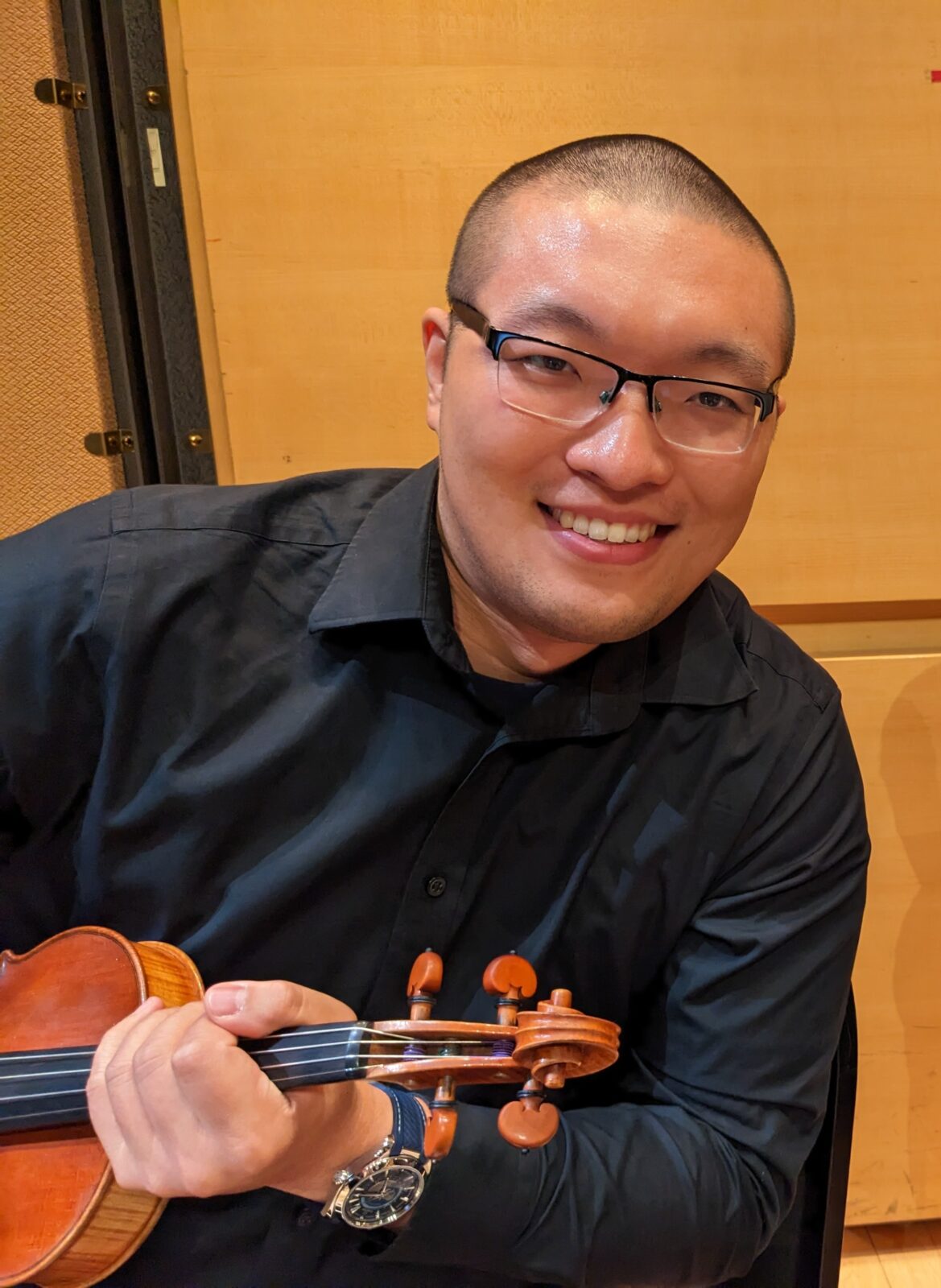
Member of the Month, June 2025: Frank Song
Frank Song, 28, may work remotely as a software engineer, but when it comes to music and the arts, he is all about being there, in person. With the flexibility to travel in his work, he seeks out concerts or museum exhibits in cities far beyond his home in Toronto. And while he’s at it, he takes along his violin to play chamber music. We caught up with Frank on a recent visit to New York, where he played chamber music with people he found through ACMP.Read More ↗

Seasoning for the Seasons
With a taste for adventure and a pinch of whimsy, follow ACMP cellist Tom Cappaert’s lead: stage a chamber concert in a Quito pizza parlor.Read More ↗

May 2025 Play-In Highlights!
Highlights from just a few Play-Ins during National Chamber Music Month!Read More ↗